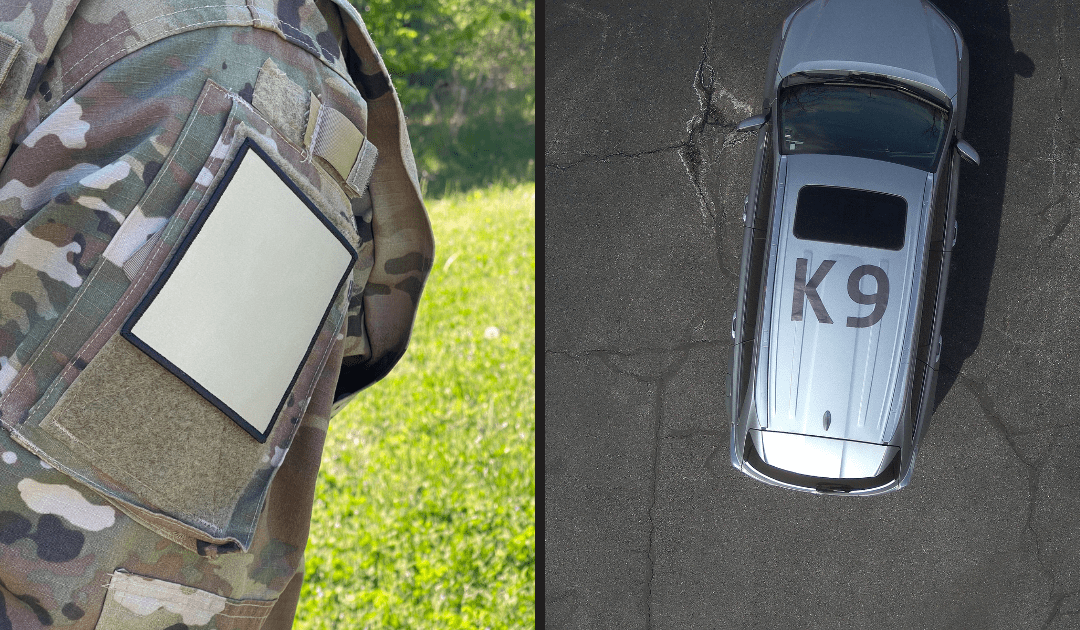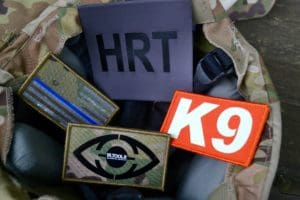Thermal Film Expands Thermal Imaging Results
Thermal imaging has become an indispensable tool for military and law enforcement operations.
The ability for thermal devices to convert invisible infrared (IR) energy into visible IR energy provides decisive advantages. Friend or foe ID, search and rescue, suspect chases, landing zones, and battlefield awareness all benefit from thermal imaging.
However, thermal imaging alone does have limitations. While your scene is visible, the finer details of the scene are indistinguishable. Meaning you won’t see the letters, numbers, or graphics on a vehicle. For example, a suspect chase will prove difficult to identify the suspect vehicle from the LE vehicle.
Thermal film minimizes these challenges by detecting AND identifying the good guys from the bad guys.
In the end, your operations run smoother with a lot less head-scratching to who is who and where they are.
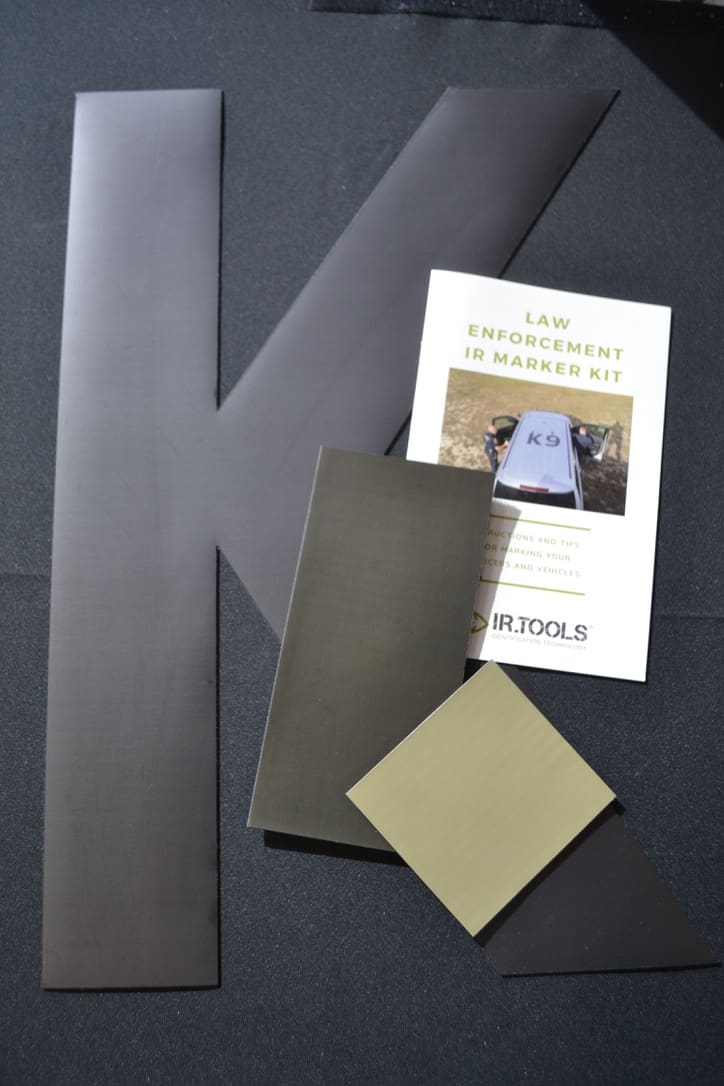
The Science of Thermal Imaging
Thermal imaging is possible because objects – living and dead – emit infrared energy – heat.
The higher the object’s temperature, the higher the intensity of the infrared energy. 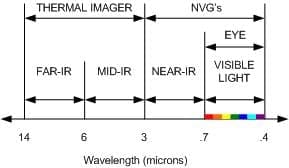
The human eye is sensitive to wavelengths ranging from approximately 380 nm to 700 nm. As the wavelength increases beyond 700 nm, the light is classified as infrared, and our eyes lose the ability to detect it.
Radio signals, IR radiation, visible light, ultraviolet energy, and land X-rays are all forms of infrared energy. Energy is characterized by its wavelength. These waves all have the same velocity, which we call the speed of light, but their wavelengths vary. Differences in wavelength establish the various categories of the electromagnetic spectrum.
These infrared categories are identified as Near, Mid, and Far infrared.
Far and Mid infrared in the spectrum is visible with a Thermal imaging device.
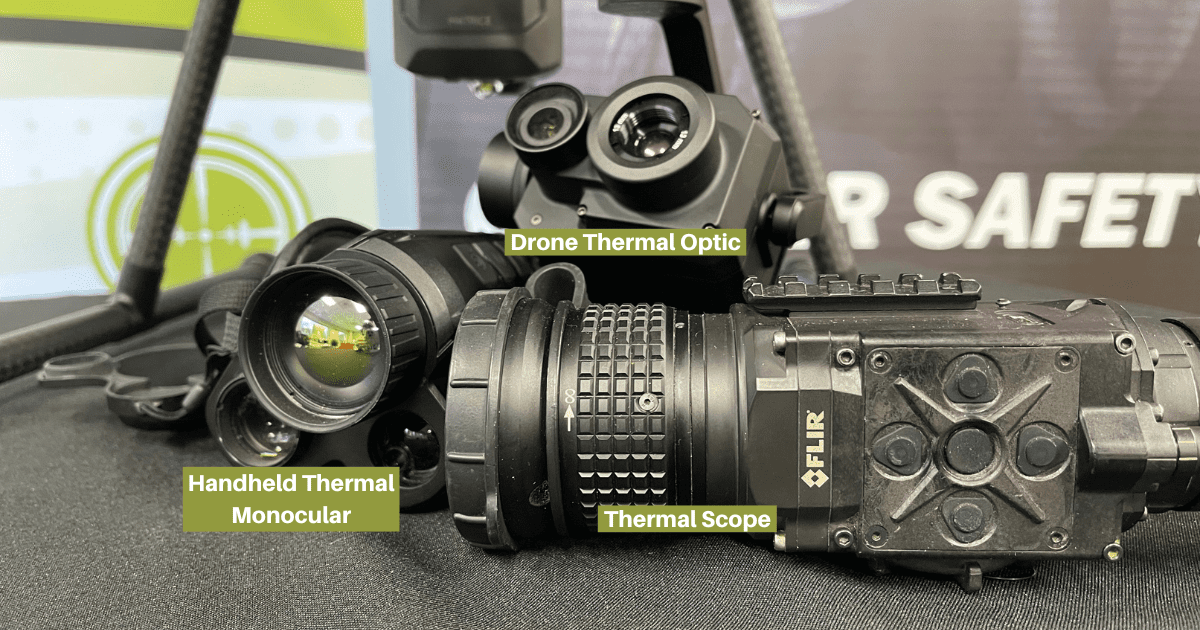
The Limitations of a Thermal Imaging Device
No doubt about, thermal imaging devices deliver some impressive results!
But we can’t ignore the limitation that exist.
Primarily, they cannot match the details of a Canon or iPhone camera you use to for family memories. Even in ideal thermal conditions, it is a struggle to identify nitty gritty detail of a scene.
Second, thermal imagers paint a picture of the scene using colors to show temperature differences. The different temperatures show a contrast of colors. Potentially, a target and a nearby object could be the same temperature and show the same color. This will make it difficult to discriminate between the two.
Not knowing who is who and where they are creates confusion, mistakes, and possible casualties.
The thermal images below are an example of a work truck in the shade. The details and graphics on the door are illegible. The heat from the asphalt is apparent yet the rest of the scene is cool and blurry.
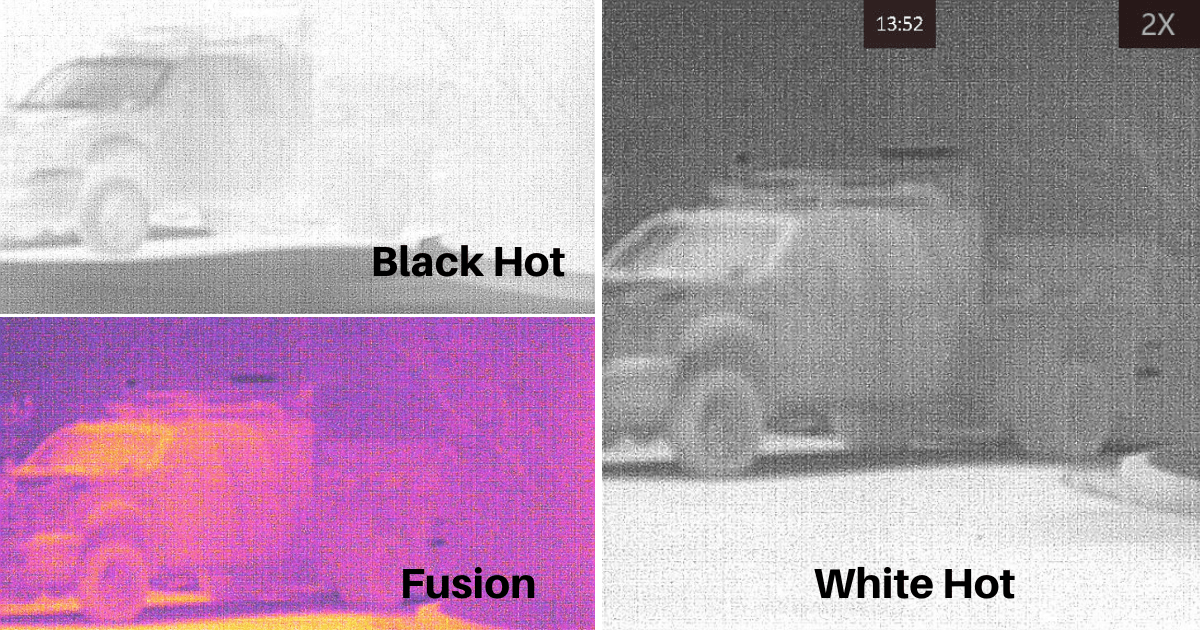
End your anxiety: Never 2nd guess “Is that our guys?” again
A piece of thermal film attached to your vehicles, persons, or objects will reduce your dependency on the details of the scene. The film provides a clear identifiable contrast between the target and the good guys. Therefore, you know who is who and where they are.
The film works by reflecting the temperature in its surroundings. So, while the film is not actually cold it appears cold to the thermal sensor. The “cold” film’s contrast is clearly different from the rest of the infrared energy (heat) in the scene.
For example, when the thermal film marker is attached to a police vehicle, it is detected and stands out from all the other vehicles on the road. The film appears as an unmistakable contrast in the thermal imager.
The actual color of the contrast is dependent on the palette settings of your device. To learn more about palette settings, click here.
Example below is a drone thermal view of K9 thermal markers on vehicle.
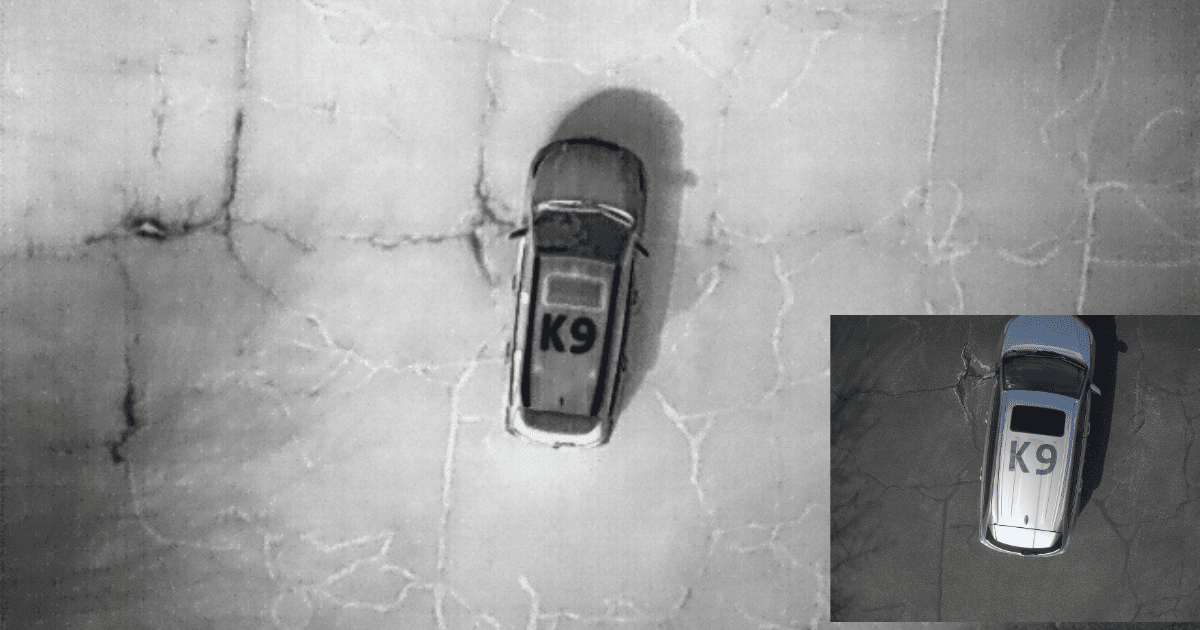
Applications of Thermal Film
The applications of thermal film range across several usage scenarios. Battlefield operations, aerial surveillance, suspect tracking, rescue missions, and weapons target training are some of the operations that find success with the thermal film.
The film is cut into various sizes and designs and then built into custom patches, panels, markers, and targets.
- Patches are worn to provide clear identification by soldiers or officers.
- Panels are used to ID vehicles, personnel, and landing positions.
- Markers are attached to ID police vehicles, tanks, buildings, and set ground control points.
- Passive and Powered thermal film targets are used for training exercises to improve shooting accuracy under a thermal scope.
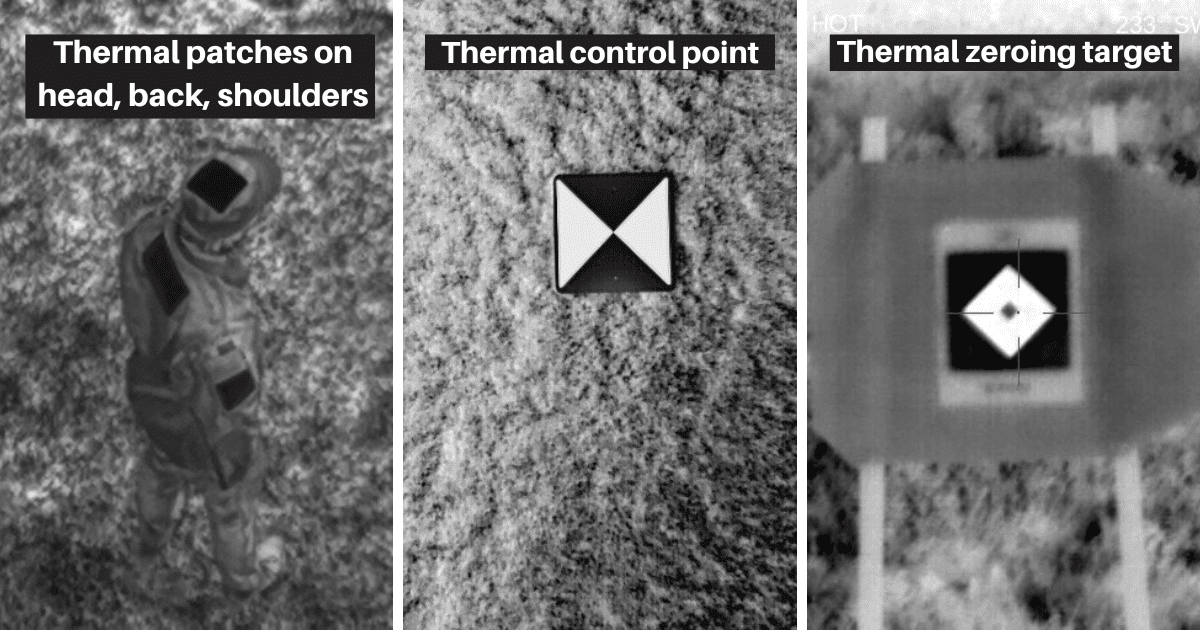
Crucial Advantages to Thermal Film
- The thermal film is a passive material. This means it works without a power source or any kind of supplemental illumination.
- The thermal film works outside in the daytime and nighttime operations. The benefits of the film are not limited by the time of day.
- The thermal film even works in challenging environmental conditions. Your thermal device will detect the film in smoke, rain, fog, and even sandstorms. A layer of moisture may temporarily lessen the contrast, but water causes no permanent damage.
Thermal Film is Proven Technology
The popularity of thermal devices in Military and Law Enforcement operations has steadily increased the demand for thermal film.
Military and Law Enforcement have found that Thermal film is a proven technology that is contributing to safer and more successful day-to-day operations.
IR.Tools complete line of thermal film products will adapt to any operational scenario.
Contact us today and begin accelerating the success and protection of your thermal device operations!
Buy a Test Sample Kit!
We have put together a few thermal film test and evaluation kits for your department to try.
Before you buy, contact Tom for a discount coupon code.
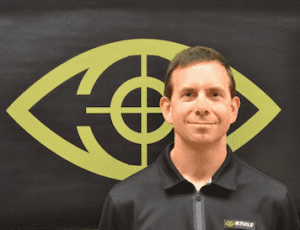
Since 2006, Tom has been the driving force behind IR.Tools, dedicated to delivering top-notch infrared solutions to the military, law enforcement, and sportsmen communities.
What began with a single infrared patch has blossomed into a comprehensive store featuring hundreds of IFF patches, vehicle IFF, an extensive suite of thermal training targets, and tools for drone pilots.
Beyond his innovative products, Tom is passionate about educating users on infrared technology and showcasing how advancements in IR can enhance their operations.
Tom holds an MS in Mechanical Engineering from the University of Maryland and an MBA from Regents University.

